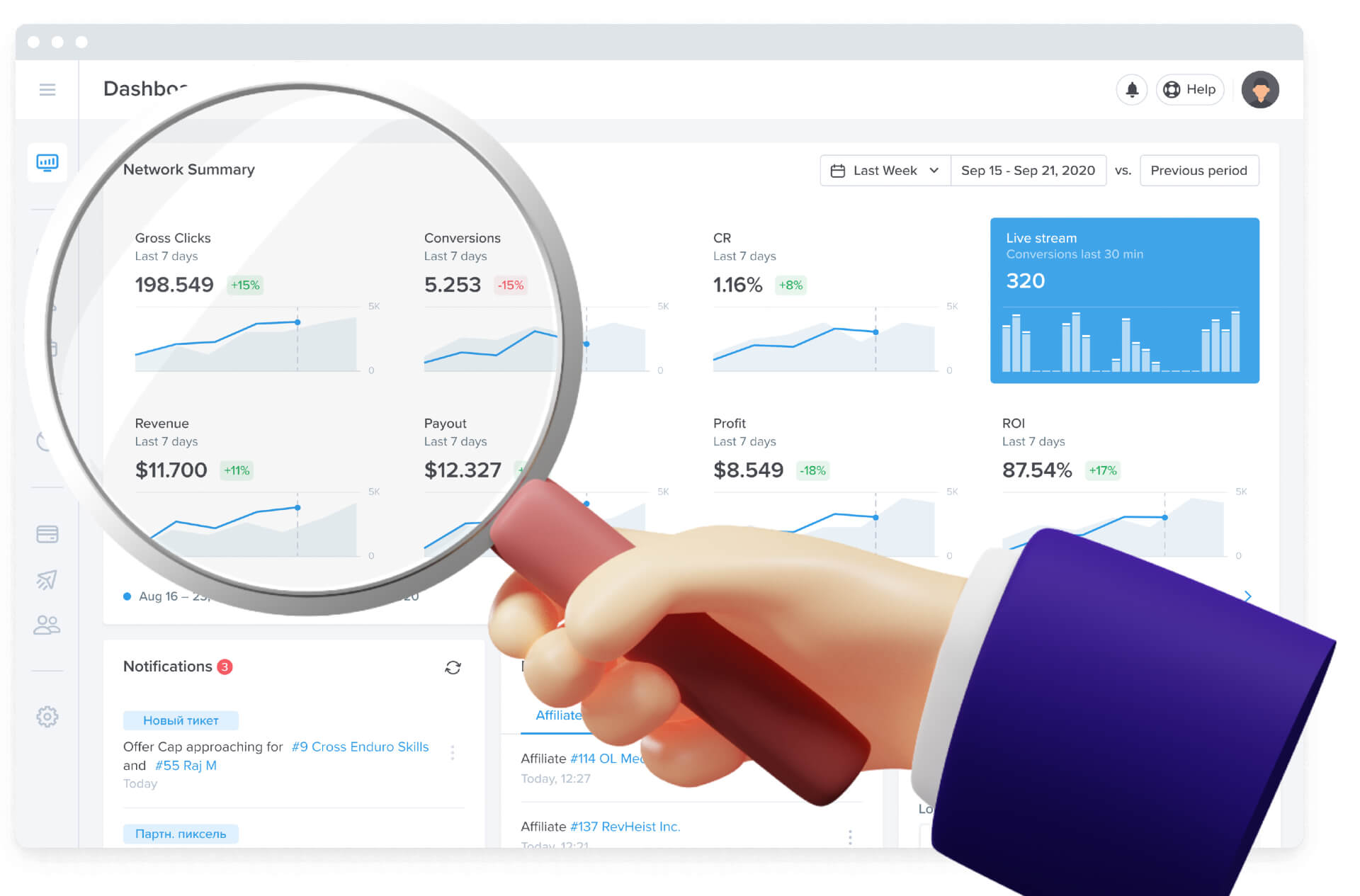Affiliate link tracking is one of the most important aspects when it comes to scaling your business vertically. In this article, you will see how to track affiliate links and what affiliate link trackers you should use.
Affiliate links are one-of-a-kind URLs that are used to track affiliate performance and traffic that comes directly from them.
This is a straightforward answer to the question, “What is an affiliate link?”
If you’re already familiar with the fundamentals of affiliate marketing and want to learn more about affiliate link tracking, jump ahead to this section.
In a nutshell: affiliate marketing
You may have heard that affiliate marketing entails things like referrals and commissions. This is accurate, but let us be more explicit.
Assuming you have a cool small blog or video channel. You may want to consider launching an affiliate program if you want to generate some form of passive revenue from it.
The best way to do this is to pick a topic you typically blog about. Take, for example, new music. Then you should ask yourself, “What else could my fans be interested in outside of the content itself?”
Perhaps they would also wish to purchase concert tickets, CDs, LPs, or MP3s.
A marketing program called “affiliate marketing” lets you reach out to a lot of different online ticketing and music stores, as well as audio equipment stores, and ask them to be your affiliate.
What is affiliate marketing?
This means that you will occasionally promote their items, discounts, or special offers on your site. They pay you a percentage of new purchases that come directly from you in exchange.
This is sometimes referred to as “revenue sharing.”
The same is true the other way around: if you have an online ticket store, it is a good idea to discover some popular blogs or channels with a large number of visitors and offer them a commission for marketing your store.
If customers like your service and user experience, you’ll quickly run out of tickets!
Make it pour.
Now that we’ve covered the basics of affiliate marketing, let’s look at what an affiliate link is.
Our previous example shows what you need to provide in your blog post or video description to encourage users to click on a specific ticket or music store.

Furthermore, because affiliate marketing is based on performance, an online ticket retailer knows how many purchases came directly from a specific music blog. Affiliate links can also help you figure out which affiliates are the most successful and reward them accordingly.
How to Determine Which Links Lead to Conversions?
Tracking affiliate conversions is the best way to determine how useful affiliate links are.
You need to know which links lead to new customers, transactions, subscriptions, or whatever user action you choose to call a conversion so you can figure out which ones work.
In order to do so, you must have some form of conversion tracking system in place.
It all starts with a click, which precedes any subsequent action the user takes. Users can access a specific landing page for a product or service by clicking on the affiliate link. Each affiliate link must include a number of different factors in its URL to answer the following questions:
- What is the user’s origin (which affiliate link did they click on)?
- Did they make a purchase (was there a conversion)?
- Is this a valid conversion?
The query-string parameter section of the URL might have several values.
It’s vital to realize that a click is one thing, but conversion is quite another. If you’re a more seasoned reader, you’re probably well aware that not every click results in a conversion. We do not live in an ideal world.
Let’s get technical.

Conversions can be measured in a few different ways. Let’s take a closer look at the most frequent ones:
Client-based tracking
Client-based tracking makes use of cookies on the user’s computer. When a user clicks on an ad that takes them to a landing page, cookies are installed on their browser.
A conversion pixel appears if they make it there, which takes the cookie information (transaction ID) and sends it to the conversion tracking system.
The system then processes this data, records a conversion, and rewards the affiliate who referred the user to the page. More on the general use of cookies can be seen in the video below:
Server-to-server tracking
This tracking method works in the same way as the previous one, but without the use of cookies. Surprisingly, it is even more delicious.
When users click on an ad, no cookies are stored in their browser. Instead, the advertiser keeps track of the transaction ID on his end.
Consumers click on a unique tracking link, which sends them to a landing page. If a conversion happens, the system on the advertiser’s landing page (or offer URL) sends a postback to the conversion tracking system with the transaction ID.
However, to use server-to-server tracking, the advertiser must own a system or platform capable of sending these types of notifications or requests.
Conclusion
We have indicated that you need a system to track affiliate links and conversions, whether you’re an affiliate, advertiser, or affiliate network.
Whichever of the above three categories you or your esteemed readership falls into, we assure you that our Affiliate Software will benefit you.
It supports both client-based and server-to-server tracking, as well as various compensation and revenue models. Our software also has smartlinks that make the most money possible, which is always a good thing.
It’s also really simple to use, so request your free demo to see it in action!
Last Updated on March 23, 2022






